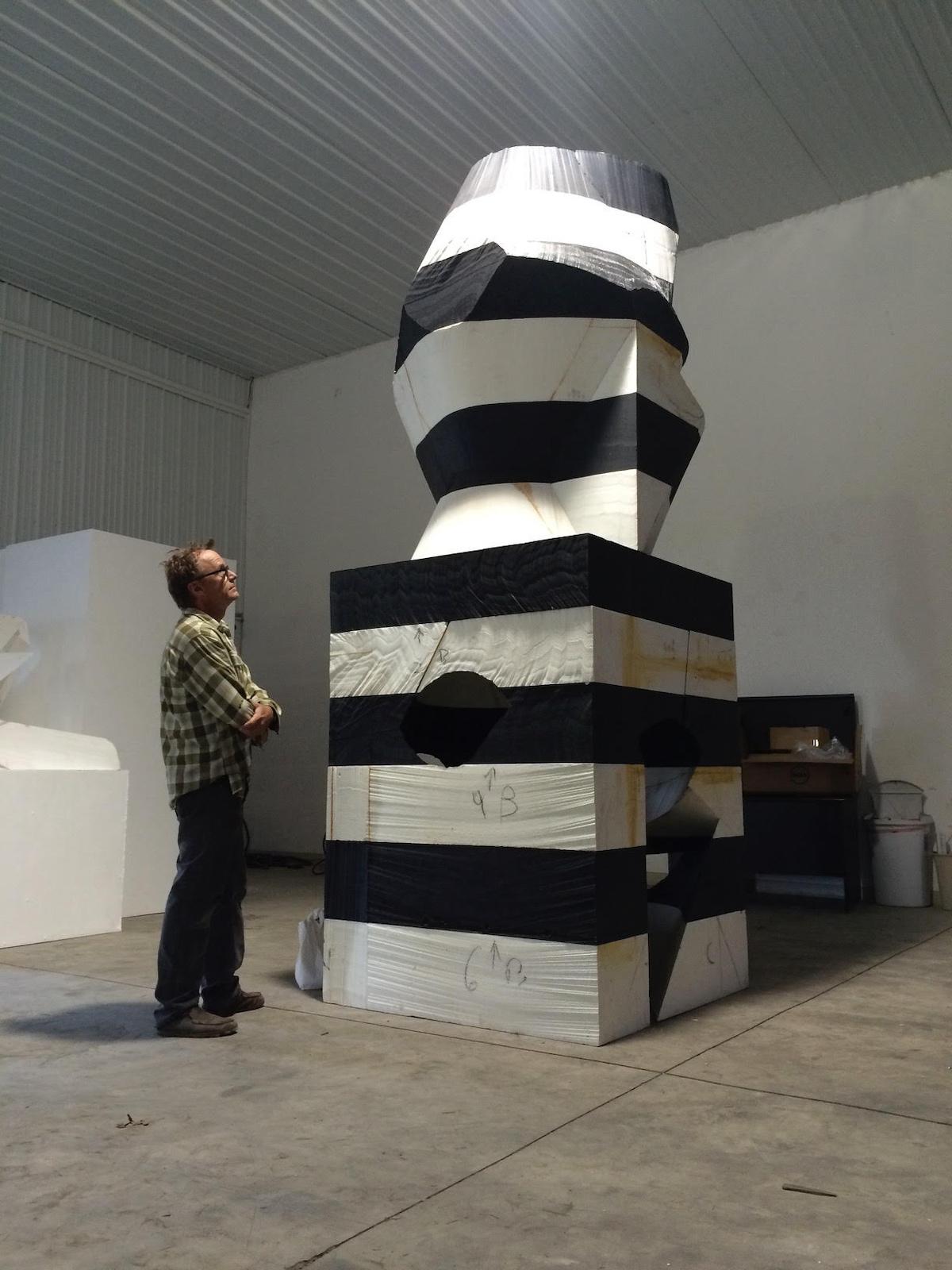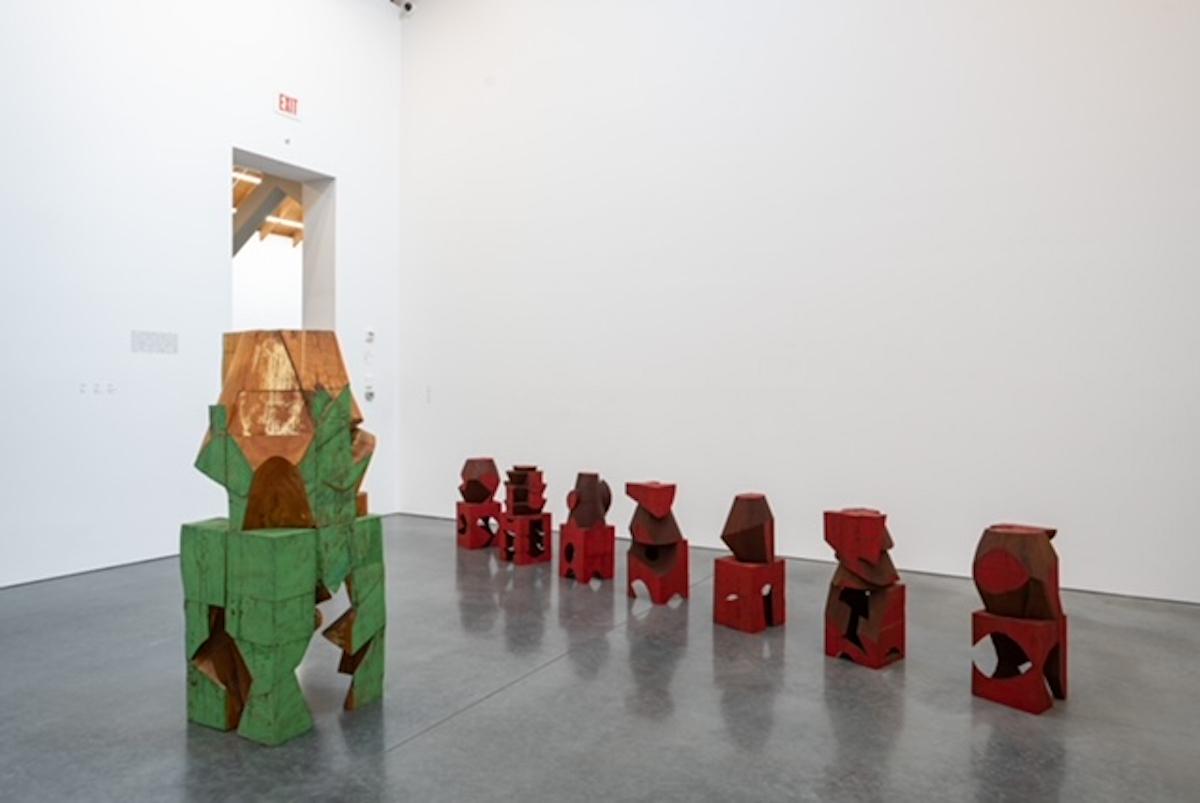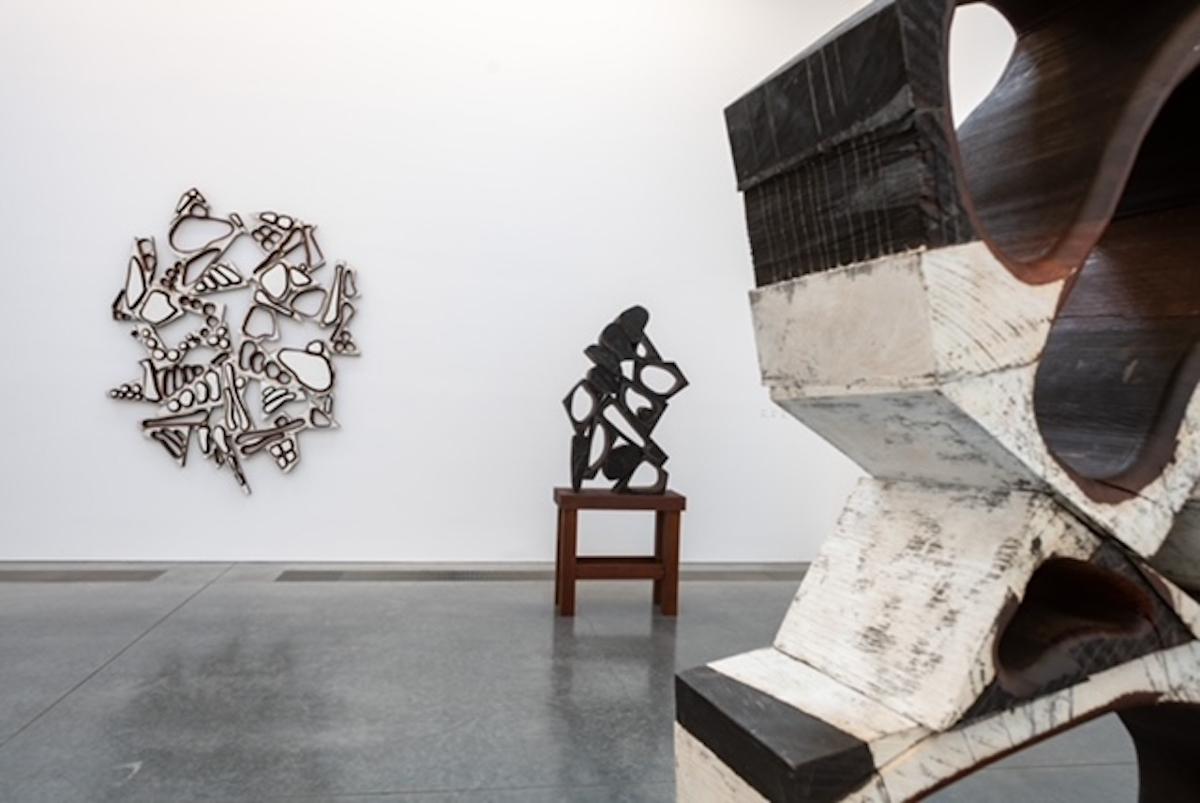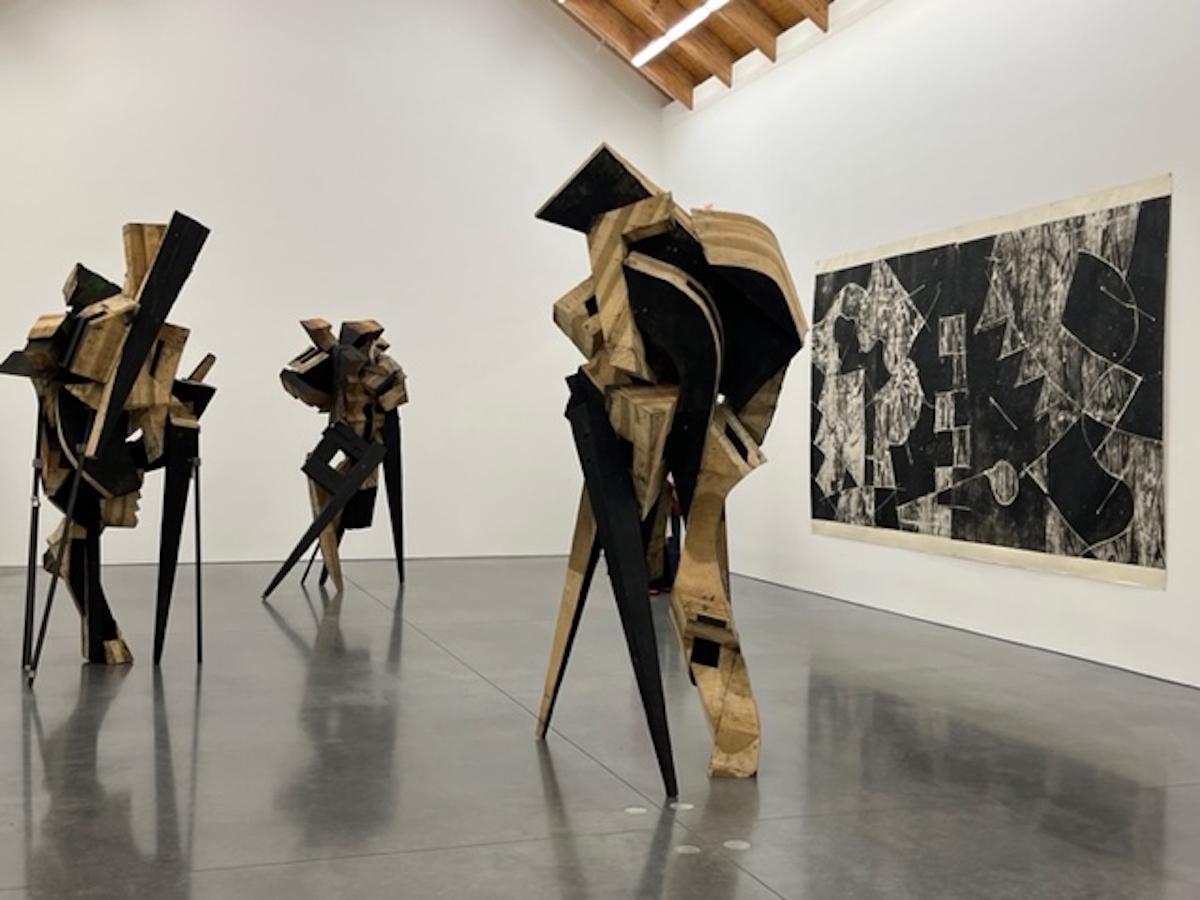When he arrived at the Parrish, he discovered that he could install his large concrete works outside the entrance to the Herzog and De Meuron–designed museum. “It became a separate show and then,” he realized, “the space itself was part of the show,”—an outdoor gallery and a grand entrance.
“The space at the Parrish brought this new focus,” Kendrick said. “The irony is that, when I started moving things around, the pieces seemed more monumental.” Then, he added, “I considered each room a show.” There were nine rooms. “The first big room was very exciting with sculptures all around. Unlike in a painting exhibition,” he said, “I could see the space behind the works. I got to see the power of the architecture, I used the museum, and it became part of the work.” The light, the time of day, and the season expanded the potential of the work.
The artist also installed a large sculpture in the main entrance, adding a counterpoint to the flat Long Island landscape that stretches outside the windowed wall. In effect, Kendrick supplemented the landscape with his own version of nature.
































